|
Lima is both the capital and the largest city in Peru.
Estimated population including the suburbs is 10-11 million. |
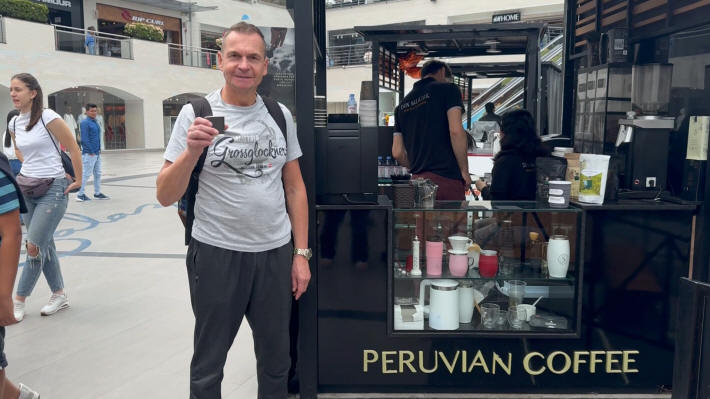 |
|
The Incas are omnipresent in Peru.
They left behind numerous testimonies of their culture.
They ruled from the 13th to the 16th century.
In 1572, the Spanish conquest of Peru ended the rule of the Inca Empire
over large parts of western South America. |
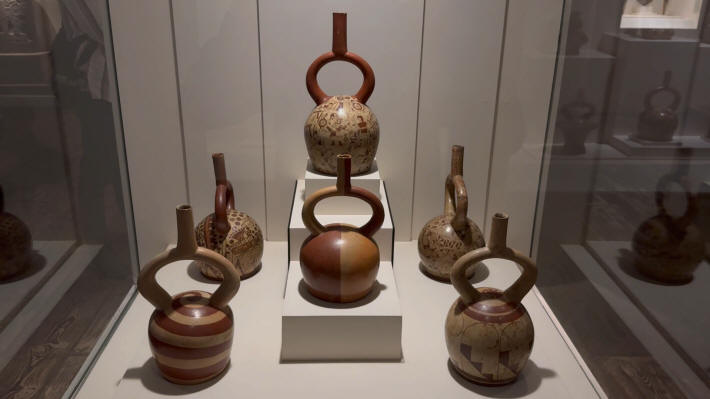 |
|
These tools were used to perform operations on the skull. |
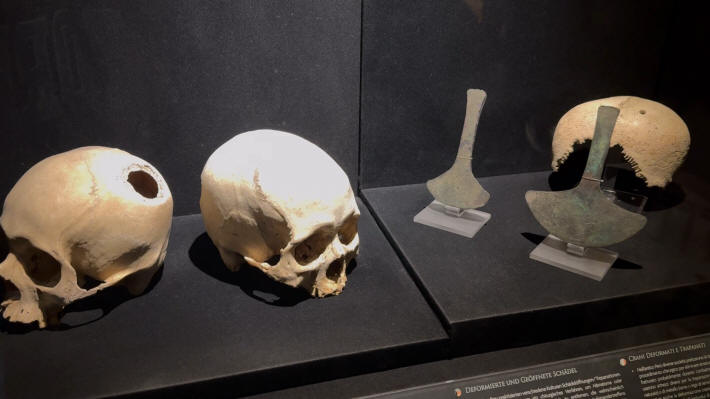 |
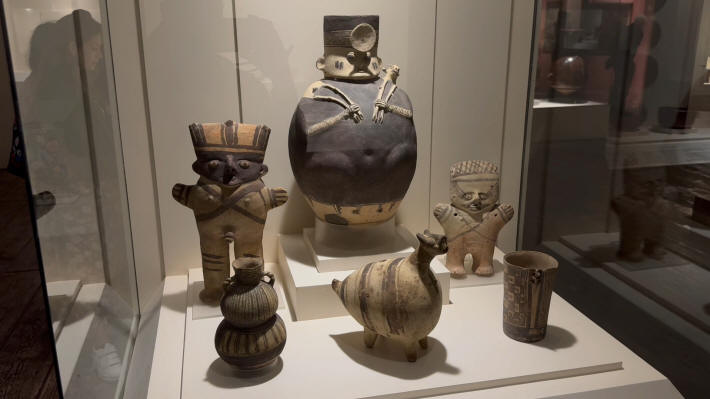 |
|
Galeria Erótica.
This room displays the collection of representations of sexuality in the
pre-Columbian art of Peru. |
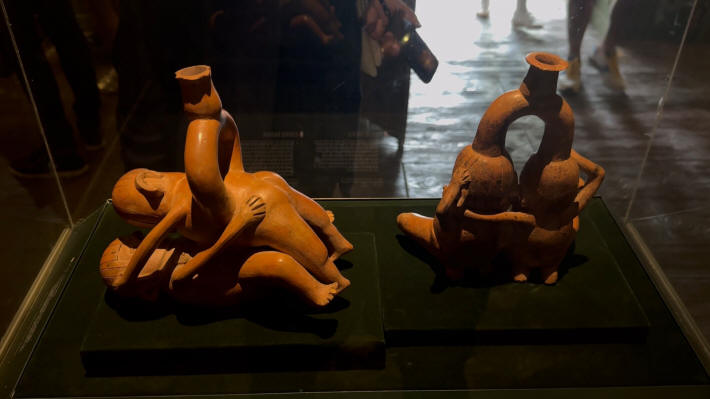 |
|
The Monastery of Santo Domingo is one of the
oldest buildings in the city. |
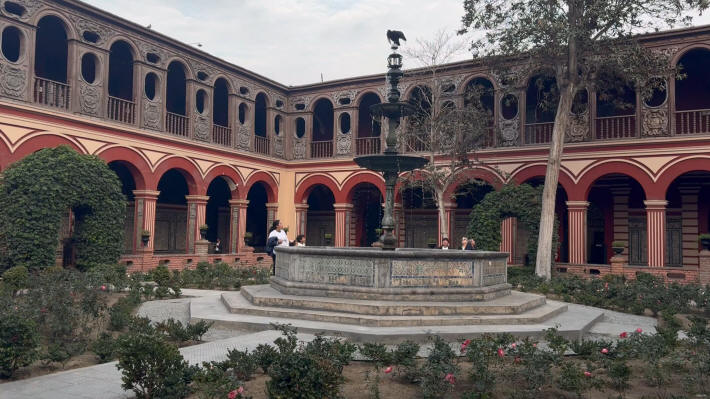 |
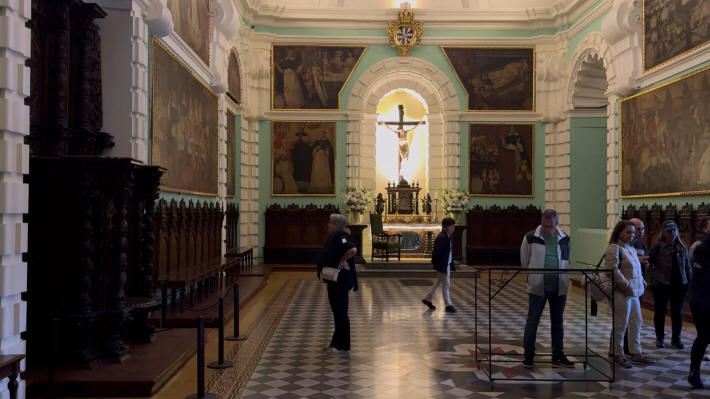 |
|
The monastery houses an important library with valuable manuscripts and
historical documents dating back to the colonial period. |
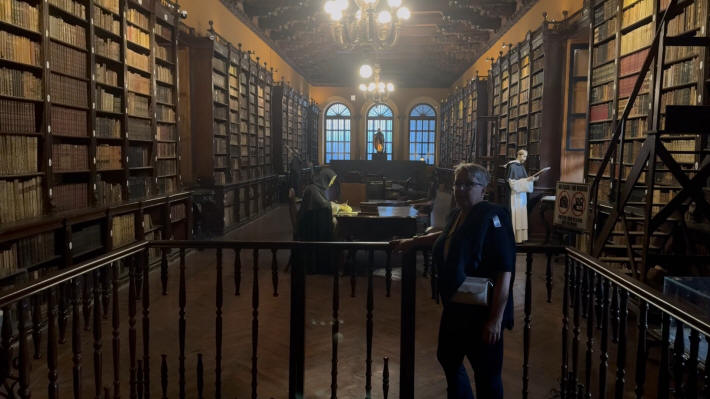 |
|
Arequipa is located at an altitude of 2.350m and
has a population of almost 970.000.
The city is dominated by the 5.821m high Misti
volcano and the elongated, always snow-covered 6.075m
high Nevado Chachani as well as the smaller Nevado Pichu Pichu, 5.664m. |
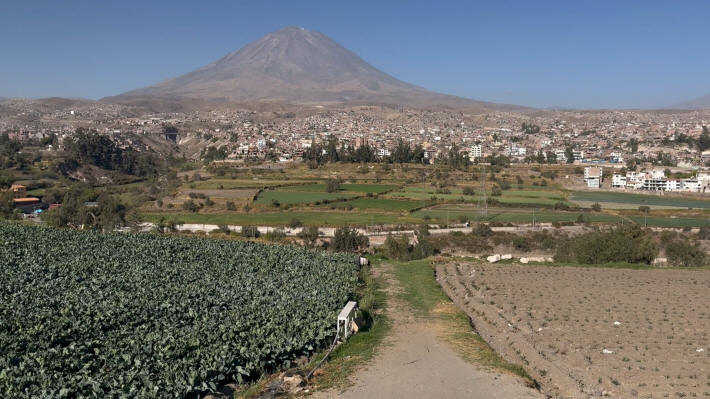 |
|
The Plaza Principal is surrounded by buildings with two-story arcades,
while the north side is occupied by the cathedral. |
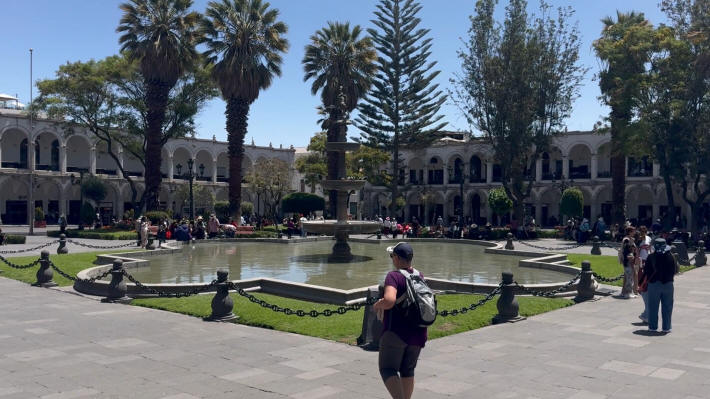 |
|
The Santa Catalina Monastery has a total area of over 20,000m2.
It is laid out like a small town, each street has a name. |
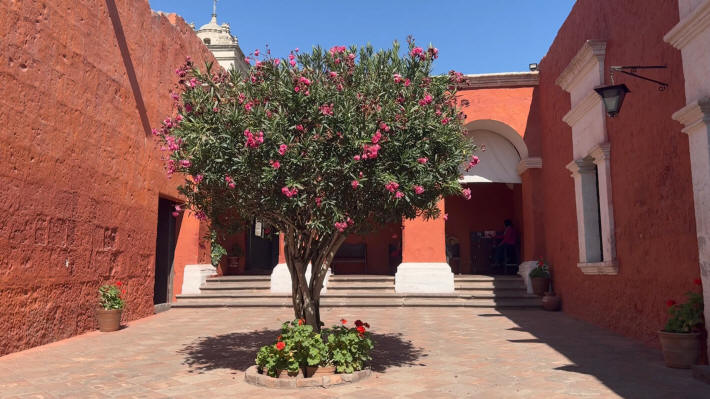 |
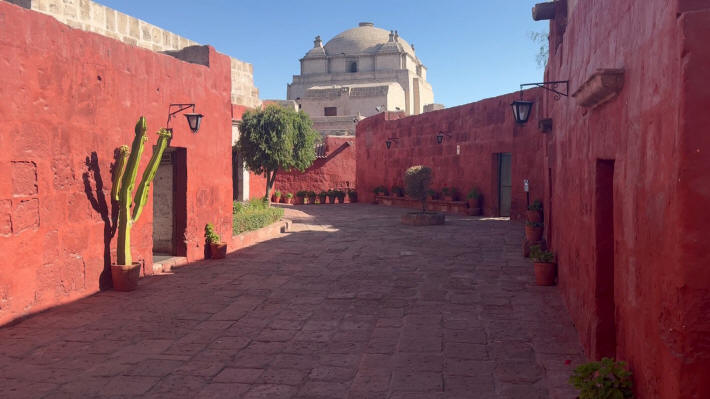 |
|
We drive through the Colca Valley to Chivay, the most important city in
the Colca Valley. |
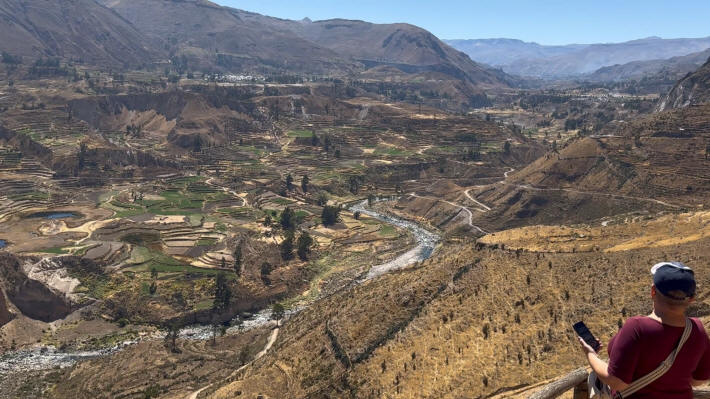 |
|
Coca Tea |
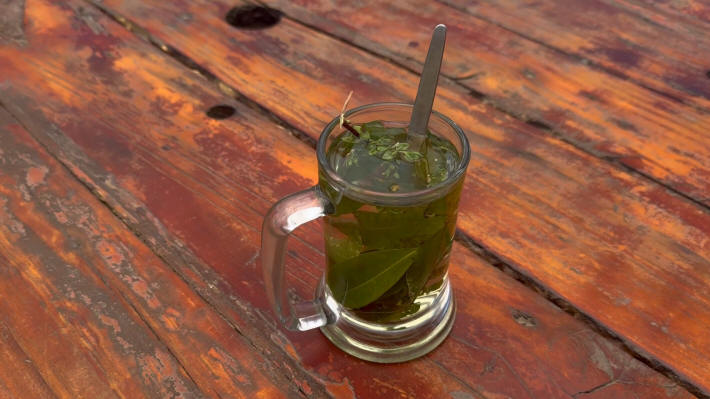 |
|
Vicunas, wear the most expensive wool in the world.
Its fibers are finer than cashmere and offer an incomparable softness
and warmth that was once reserved only for royalty.
A jacket can cost up to 21.000 euros, a
tailor-made suit starts at 32.000 euros. |
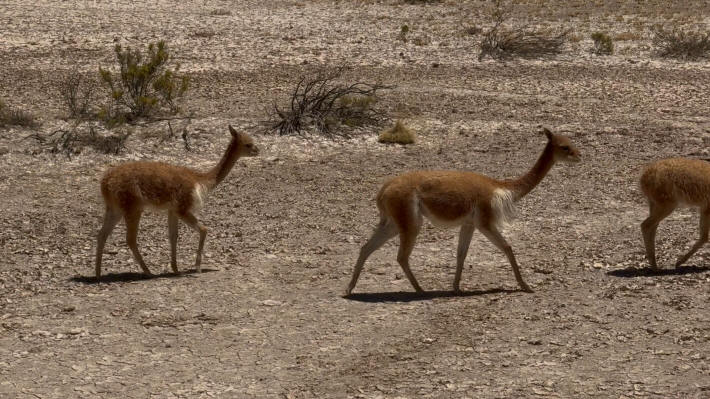 |
|
Our next stop at 4.000m altitude.
The Pampa Cañahuas National Reserve. |
 |
|
The Colca Canyon near the town of Chivay is 1.200m
deep.
At the top of the canyon is the Cruz del Condor, the Cross of the
Condor.
The 3-meter wingspan of the Andean Condor is predestined to use the
first morning thermals and to circle calmly and elegantly on the edge of
the canyon. |
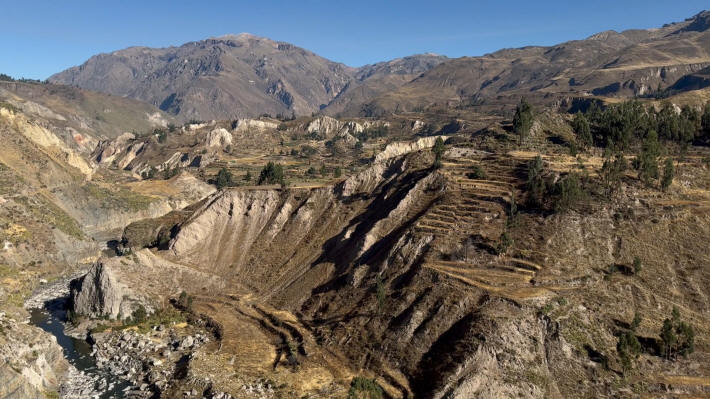 |
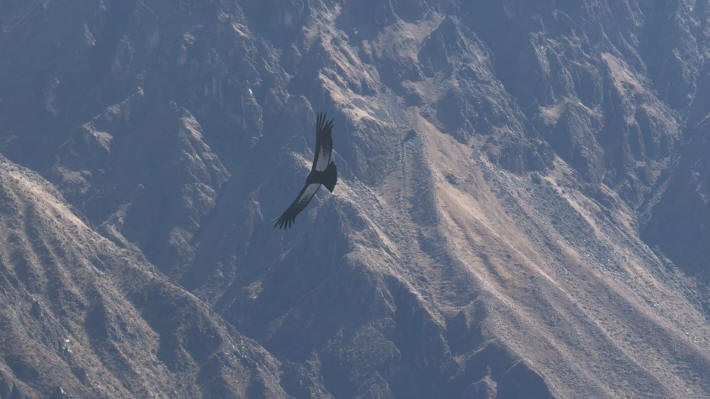 |
|
Cusco, once the capital and heart of the Inca Empire and at least as
powerful and rich as ancient Rome. |
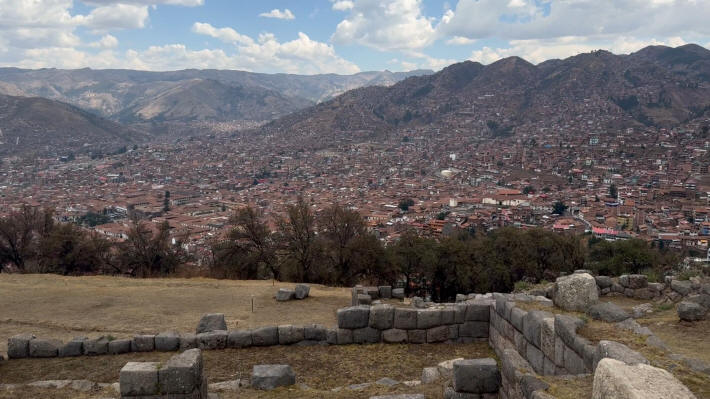 |
|
The Monastery of Santo Domingo. |
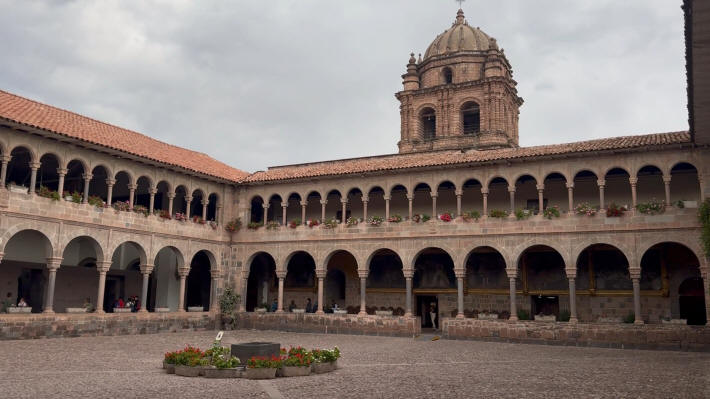 |
|
Ollantaytambo, an ancient Inca military, religious and agricultural
center. |
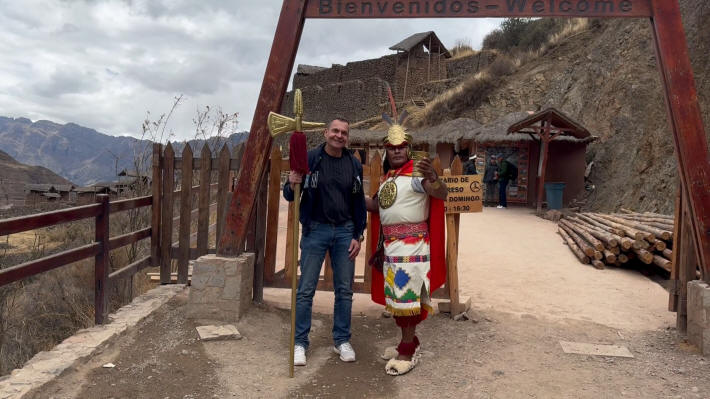 |
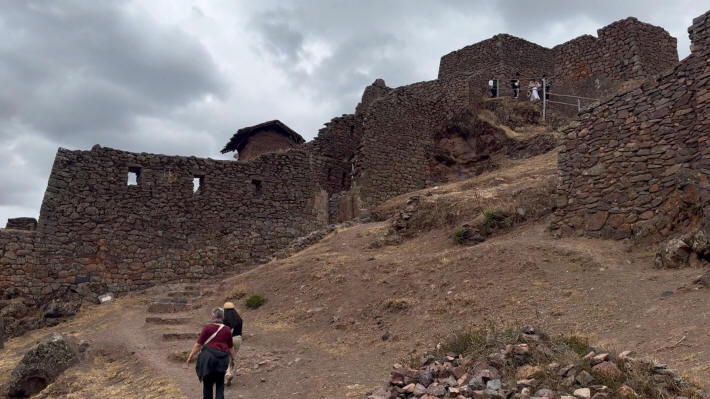 |
|
The city of Písac is located in the Sacred Valley of the Incas.
The city center of Písac consists of two parts.
The actual city of Písac is one part, the other is the sacred district. |
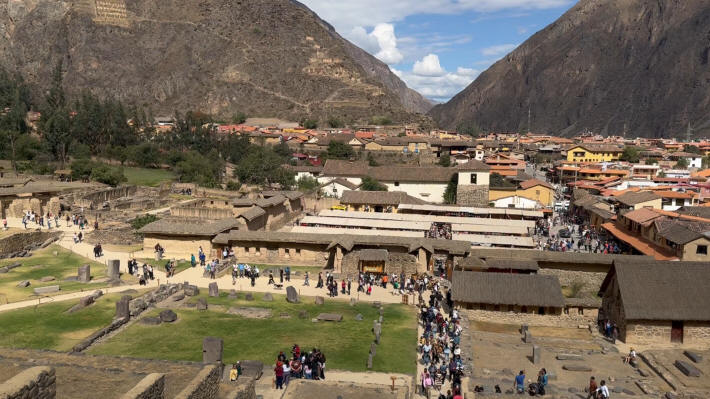 |
|
Sacred Precinct of Písac |
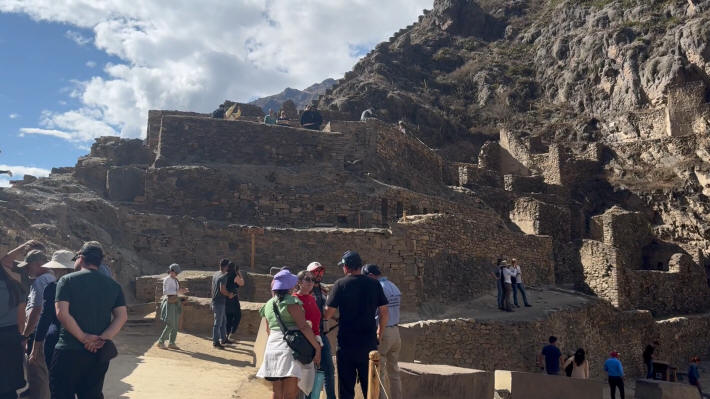 |
|
Today one of the most important tourist attractions in the world awaits
us: “Machu Picchu”. |
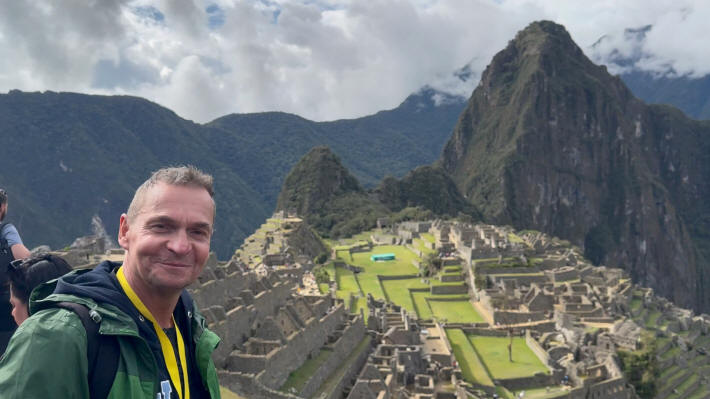 |
|
The most beautiful and mysterious evidence of the Inca period lies at an
altitude of 2.500 meters above sea level.
According to one theory, the city was built around 1450. Research today
assumes that the city could accommodate and support up to 1.000
people at its peak.
Various theories have been developed about the meaning and purpose of
this city.
In fact, no traditions exist about it.
Archaeologists and scientists are still arguing: Was it a summer
residence of the Inca rulers, a refuge for the sun maidens, a city of
magicians, an Inca university, a fortress against wild Amazon tribes or
all of the above?
The conclusion remains that we still know nothing for sure about Machu
Picchu and that the city holds a secret. |
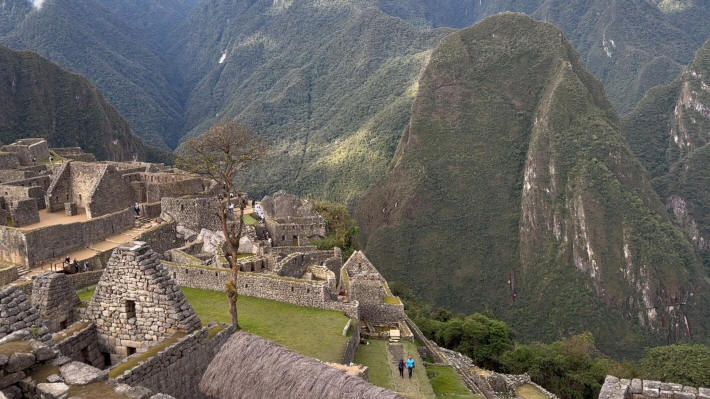 |
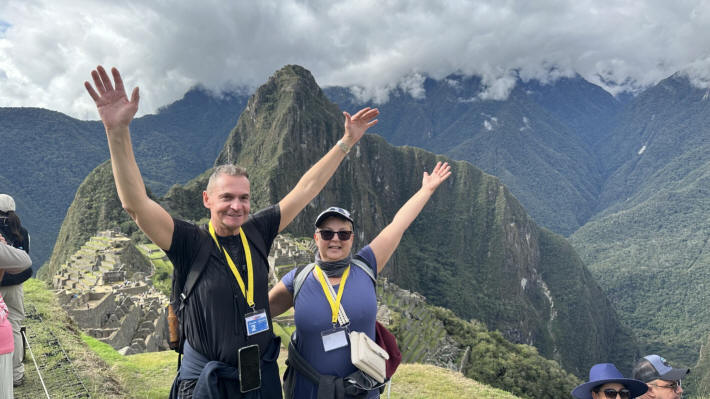 |
|
Lake Titicaca is located on the Altiplano plateau between Peru and
Bolivia.
It separates and connects both countries.
With an area of 8.560km2, it is 16 times larger
than Lake Constance and, with a height of 3.810m,
it is one of the highest navigable bodies of water in the world. |
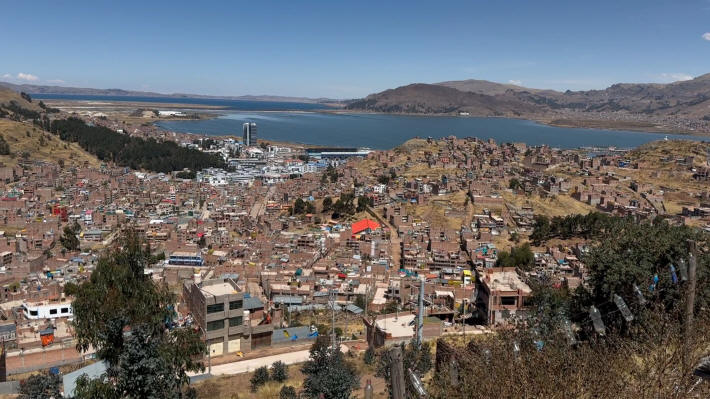 |
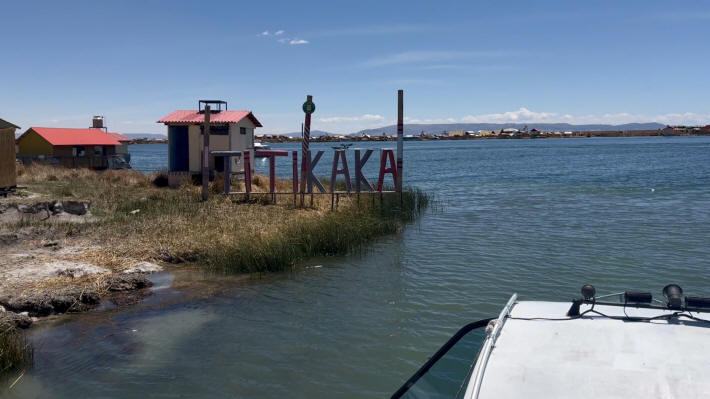 |
|
The Uros are a people who have lived on the floating islands of the lake
for more than 3.000 years.
They have developed the ability to live among reeds and have adapted to
the environment by using this aquatic plant to build their rafts and
houses. |
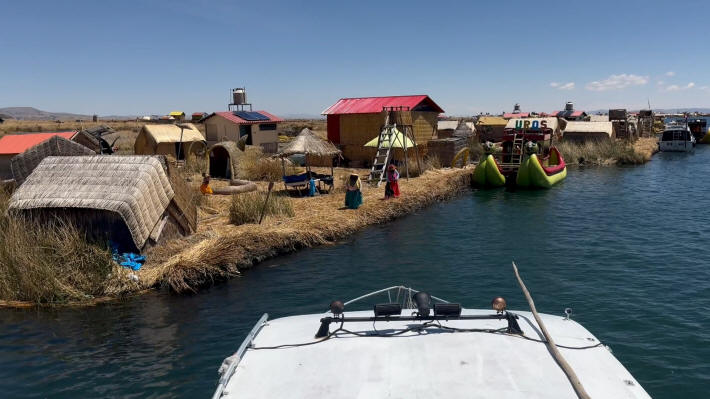 |
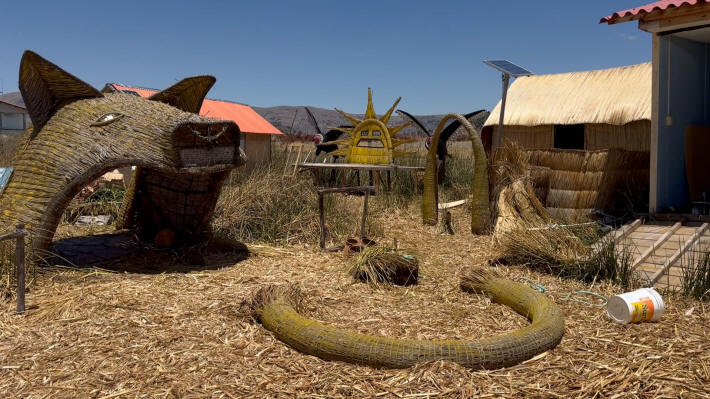 |
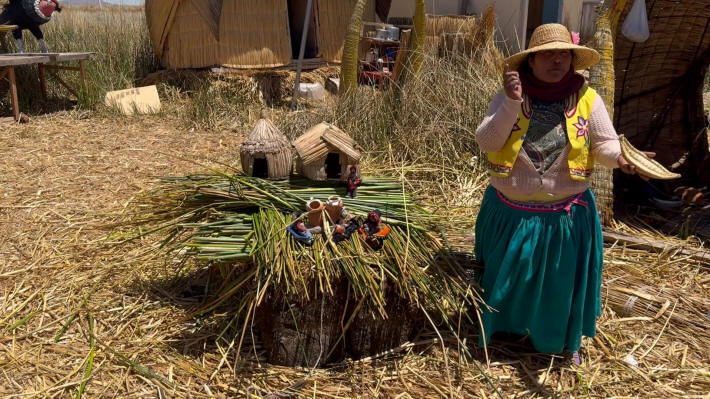 |
|
In Peru, Bolivia, Ecuador and Colombia, guinea pigs, sometimes kept as
pets, have been eaten since around 900 BC and are an important source of
protein.
They have zero cholesterol.
A cuy roast is a completely normal dish in many parts of South America.
The light-coloured animals are particularly preferred in the kitchen, as
they look more appetising to South American tastes.. |
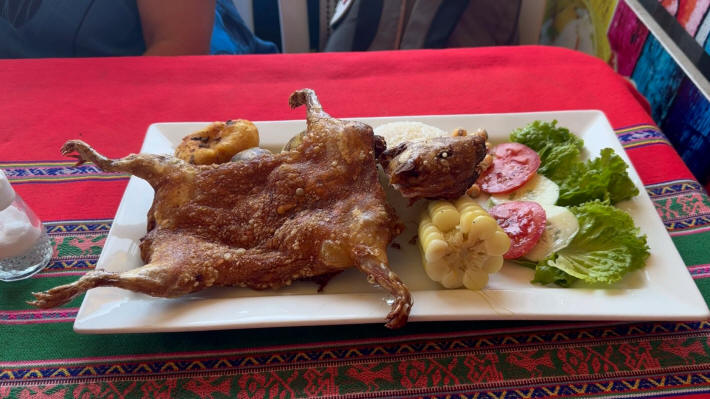 |
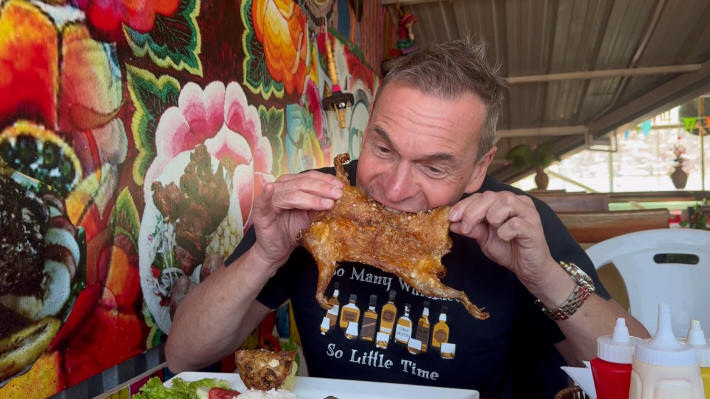 |
|
We visit the Sillustani funerary complex.
It is a pre-Inca archaeological site on the shores of Lake Umayo.
It is a burial site made up of tower-shaped tombs called chullpa.
They were built by the Qolla, an Aymara people conquered by the Inca
Empire in the 15th century.
They contain the remains of several people, probably grouped in families
of up to ten people and accompanied by offerings.
Most of them were looted, while others remained intact. |
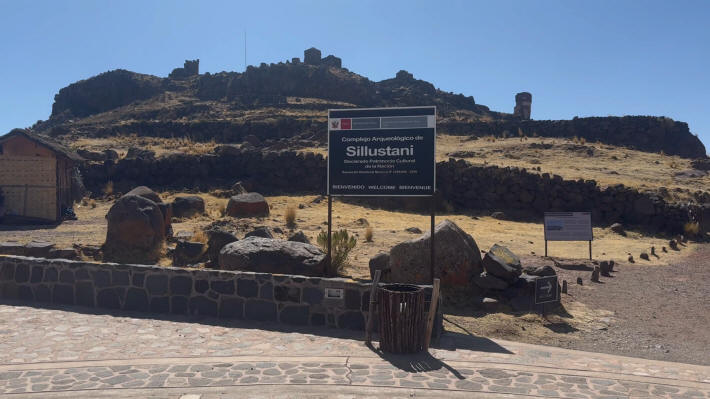 |
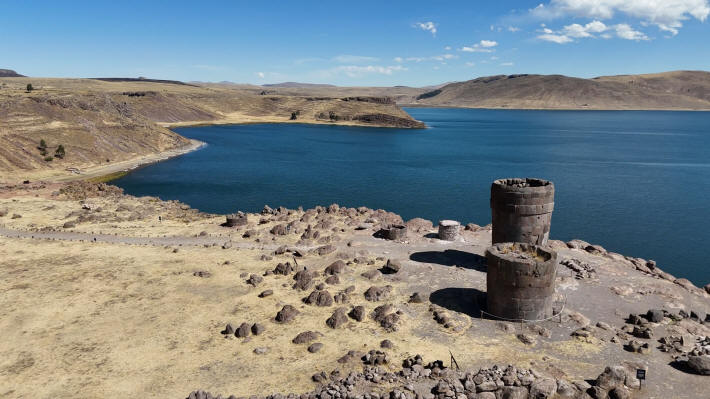 |
 |
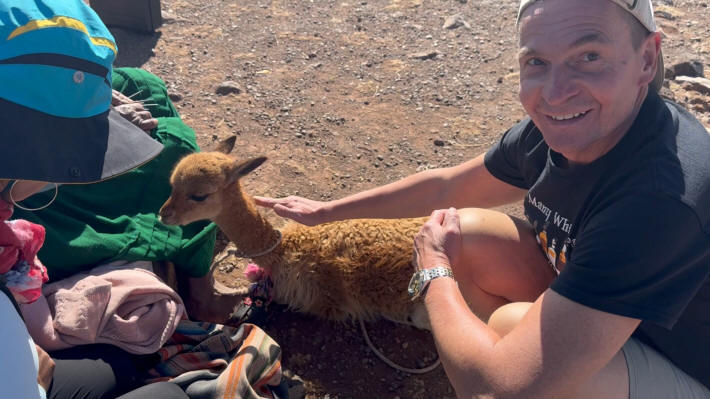 |
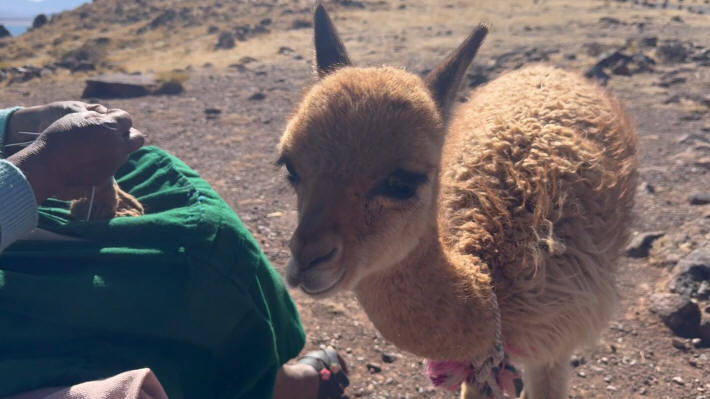 |
|
Today we leave Peru and reach the border with Bolivia around midday. |
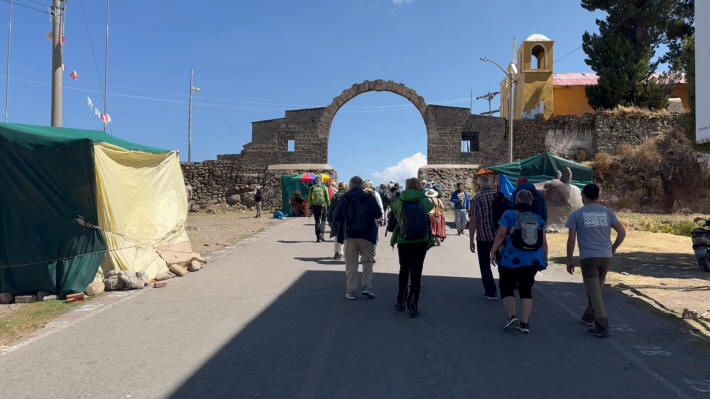 |
|
|
Watch Video
|







































